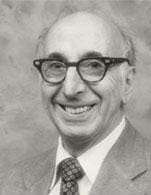
Crowded Trades



What does it take to be successful long-term? Two observations:
“The most successful market participants find a limited number of patterns that have favorable odds of success and repeat the trading of these often, with moderate risk placed in any trade. They win by acting as the house, not as the gambler. They win by taking consistent bets and harvesting returns from favorable odds. They don’t win by making the big bets and big scores. There is remarkably little drama– surprisingly little wizardry–among those who sustain success in financial markets. In the words of Lopez de Prado, their trading desks are more like laboratories than the platforms of gurus. Diversification and disciplined execution explain much of their returns.” – Brett Steenbarger
“Investing is kind of a game of connecting the dots. The nice thing about it is the longer you are in the business, as long as you are intellectually curious, your collection of data points of dots gets bigger and bigger. That is where someone like Warren is just incredible. He has had a passion for investing for well over 70 years. He started by the age of 10 or 12. He keeps building that library of data, the ability to recognize patterns in data. Being a successful investor you need to be hungry, intellectually curious, interested, and read all the time. You need a certain level of randomness in order to connect things that might give you an insight into where a business is going in five years that somebody else might not see.” – Ted Weschler


Richard Donchian left many students that still trade or run money management firms. A sampling of his students include: Nelson Chang, Robert Crowell, Barbara Dixon, Bruce Terry, Paul Dean and Brent Elam.
Bottom line, trading as a trend follower is a learned behavior. However, most people don’t want to think or learn about new methods. It takes discipline. But, if the students of Richard Dennis or the students of the Richard Donchian trend system don’t provide inspiration as to how important learning the right method is toward achieving success…well buy a mutual fund and shoot for 5% a year.
